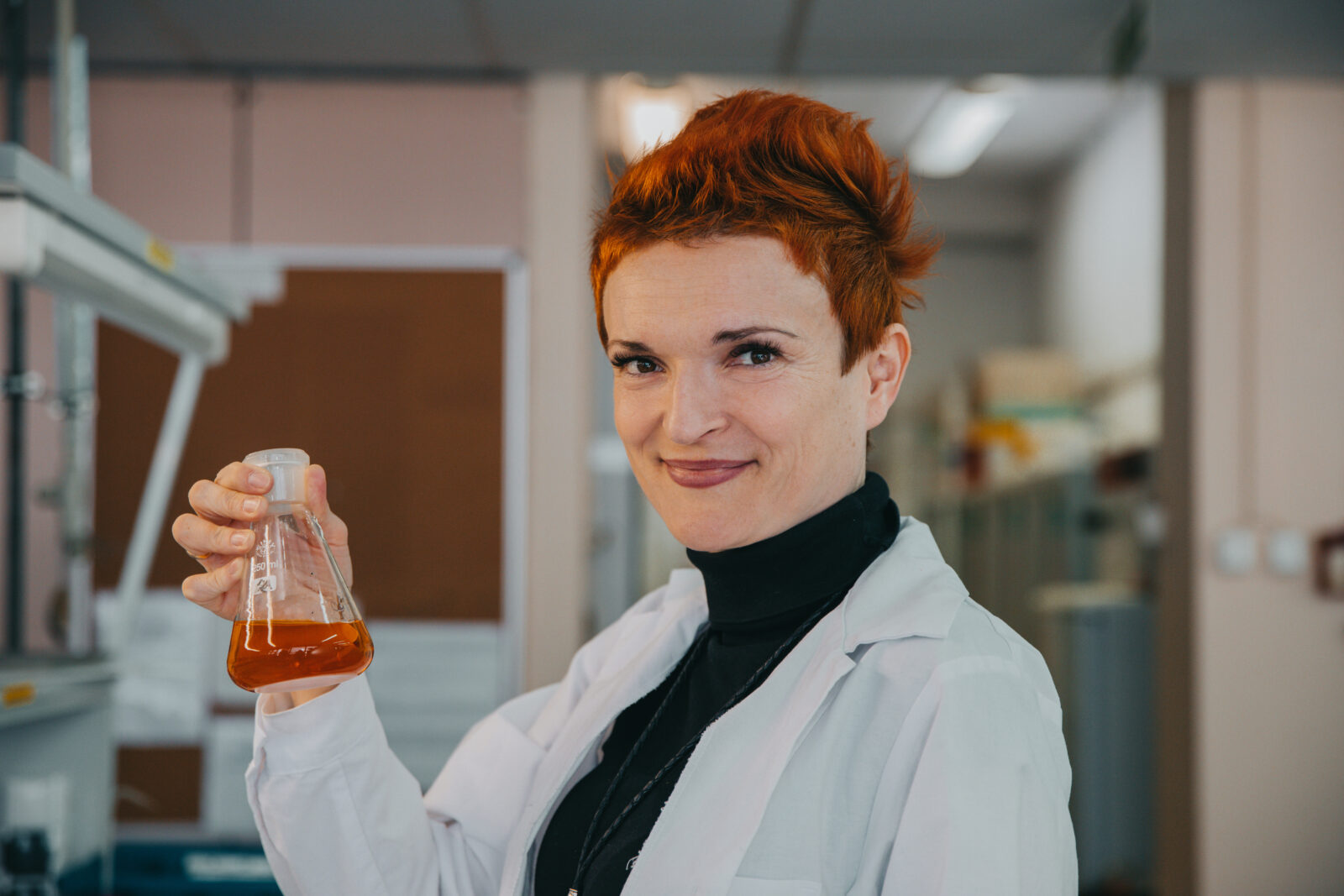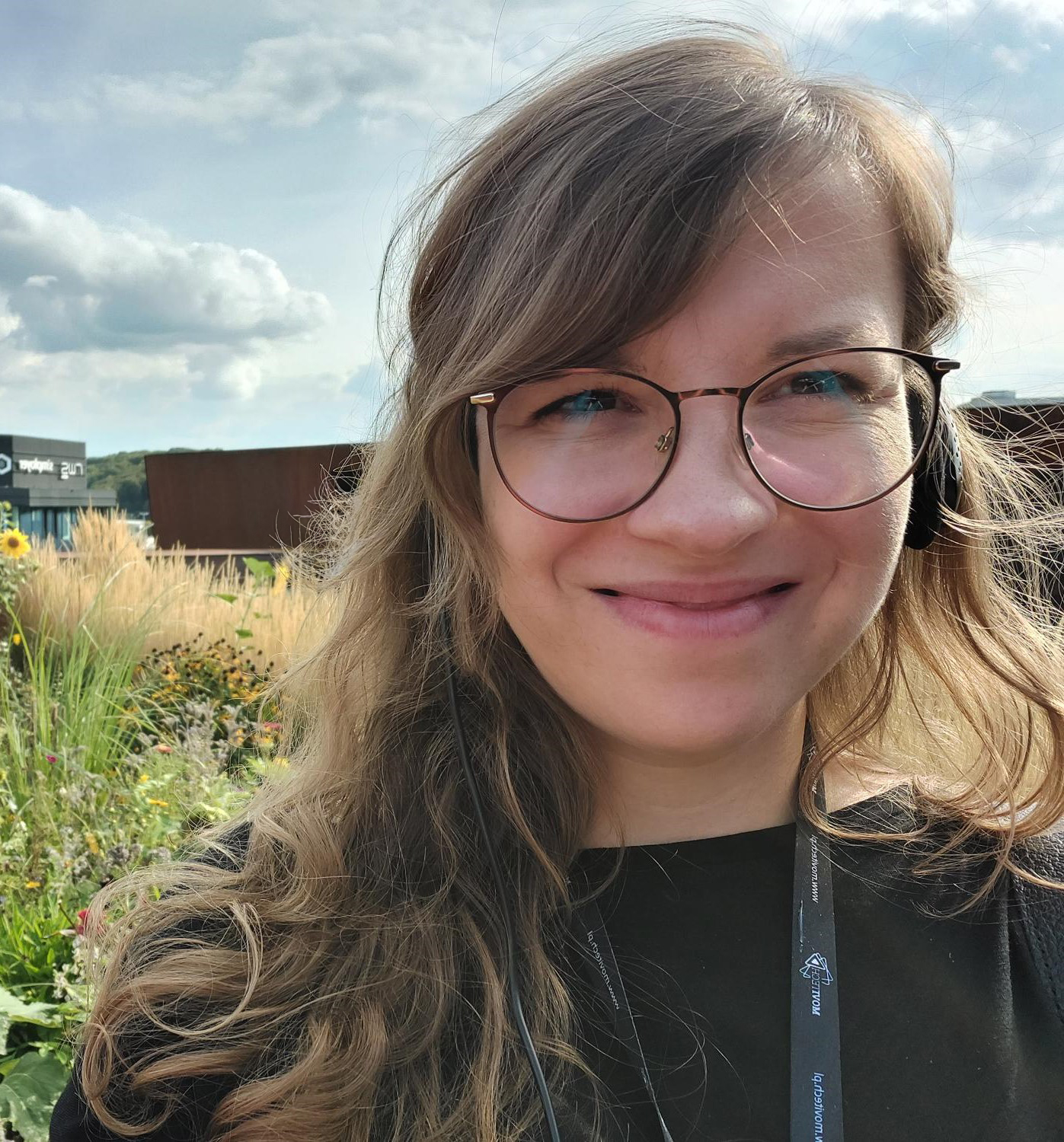
NCN grants for our chemists
27 researchers from our University will receive a total of more than PLN 40.5 million for the implementation of projects in the recently concluded OPUS26 and SONATA19 competitions of the National Science Centre.
While introducing the research topics of our scientists, we will start with the Faculty of Chemistry, which will receive six grants from OPUS26 and SONATA19.
From Opus 26 for the research on ‘Metaloorganiczne (Fe, Ru, Ir, Os) fosfo-induktory ferroptozy lekoopornych komórek nowotworowych’ (eng. Organometallic (Fe, Ru, Ir, Os) phospho-inducers of drug-resistant cancer cells’ ferroptosis), dr hab. Urszula Komarnicka will receive PLN 1,997,234.00. The project implementation team will consist of experienced researchers, as well as PhD students and students from the Faculties of Chemistry (UWr) and Medical Sciences (Medical University of Lublin). In addition, the scientists from Spain, the Czech Republic and the United States will be involved in the project.
Anticancer drugs used today are still too unselective and cause a wide variety of side effects, leading to general destruction of the body. Despite many excellent medical achievements, drug resistance to chemotherapy as well as disease relapses remain a huge clinical challenge. – One of the strategies in designing new anticancer therapeutics is the use of metal ion-based compounds surrounded by selected ligands (metal drugs) – explains the scientist. – Metal ions, among others, have a high affinity for biologically important intracellular thiols, which may significantly disturb the intracellular redox balance, lead to protein and enzyme dysfunction, and even to the accumulation of lipid peroxidation inside the cell, which may result in its death by the so-called ferroptosis.
Therefore, the main goal of the research is the design, synthesis and detailed bio-physicochemical characterization of FeII/FeIII, RuII, OsII and IrIII mononuclear as well as heteronuclear FeII/FeIII/M, RuII/M, OsII/M i IrIII/M (M = CuII, FeII/FeIII) complexes leading to ferroptosis of drug-resistant cancer cells.
Also dr Karolina Hurej will receive PLN 1,518,168.00 from Opus 26 for her research on ‘Porfirynoidowe kompleksy skandu, tytanu i manganu – nietrywialne narzędzia do selektywnej bifunkcjonalizacji prostych związków organicznych’ (eng. Scandium, titanium and manganese porphyrinoids – nontrivial tools for the selective bifunctionalisation of simple organic compounds).
Nowadays, one of the greatest challenges of organic chemistry is the rapid yet economical synthesis of complex molecules, such as drugs and other biologically active compounds. However, many organic molecules have more than one similar C-H bond, so achieving selective reactivity of the target binding site in the molecule is a major problem. – The lack of such selectivity results in poor yield of the desired compound and the need for additional purification – explains dr Karolina Hurej.
– The solution we propose is the use of porphyrin complexes and their synthetic derivatives – the carbaporphyrin – says the researcher. – Porphyrin complexes are compounds widely found in nature, such as: chlorophyll (magnesium complex), vitamin B12 (contain cobalt) or heme (iron complex). Our approach will be based on the formation of complexes of these macrocycles with transition metals, abundantly present in the Earth’s crust – which makes them much more available and cheaper, as well as less toxic compared to the currently frequently used catalysts based on rhodium or iridium ions. The expected effect is the controlled selectivity of double functionalization of specific places in the substrate molecule using a new class of carbaporphyrin catalysts with manganese, titanium or scandium ions.
From Opus 26 for the research on ‘Modyfikacja retro-inverso kompleksów cynku(II) z agonistami receptora GLP-1 – od chemii bionieorganicznej po badania na zwierzętach’ (eng. Retro-inverso modification of zinc(II)–GLP-1 receptor agonist complexes – from bioinorganic chemistry to animal studies), dr hab. inż. prof. UWr Magdalena Rowińska-Żyrek will receive PLN 3,313,794.00.
The aim of the project is to obtain novel, potent, and metabolically stable zinc(II) complexes of glucagon-like peptide-1 receptor agonists (GLP-1 RA) and to understand how the retro-inverso modification of GLP-1 Ras affects their zinc(II) binding ability, structure, stability, pharmacokinetic and pharmacodynamic properties.
Glucagon-like peptide-1 (GLP-1) is a peptide hormone able to decrease serum glucose levels by interacting with its receptor that stimulates pancreatic islet β-cells to secrete insulin, inhibits the release of glucagon, increases satiety, and delays gastric emptying. The prolonged action of GLP-1 is substantial for the treatment of diabetes, and is the reason for the extraordinary success of the lately launched liraglutide and semaglutide (Victoza and Ozempic, potent against both diabetes and weight loss), GLP1-RAs are being relied on as a potential ‘treasure trove’ of novel antidiabetic therapeutics.
– We plan to improve the GLP-1-based drug efficiency by coordinating it to Zn(II), which is known to exert insulin-mimetic and anti-diabetic effects, being co-secreted together with insulin, and its presence enhances insulin response by inhibiting the insulin receptor-specific tyrosine phosphatase 1B (the receptor remains phosphorylated and thus ‘senses insulin’, although it is no longer there) – explains the researcher. – We plan to overcome the main disadvantage of the (peptide-based) Zn(II)-GLP-1 RA complex – their proteolytic instability, by introducing carefully designed retro-inverso modifications, and thereby enhancing the potency of the modified drug.
Retro-inverso peptides have the chirality inverted from L to D (D amino acids cannot be recognized by common proteases of the body and will not be easily degraded) and have the peptide sequence in reverse direction with respect to native peptide, maintaining an identical array of side chains and in many cases, a similar structure. In other words, the retro-inverso modification results in a peptide in which the side-chains are superimposable with those of the native L-peptide, but have “inverted” amide bonds and N- and C-terminal groups.
– Basing on the exciting results of our recent Sonata Bis project, we believe that zinc(II) may enhance the antidiabetic efficacy of GLP-1 RAs either by changing their local charge or structure, or by a simple synergistic effect that would sum up the efficiency of both antidiabetic agents – adds prof. Rowińska-Żyrek.
From Opus 26 dr hab. prof. UWr Bartosz Szyszko will receive PLN 2,576,640.00 for his research ‘Samoorganizacja z subkomponentów sprzężona z tautomeryzacją – nowe narzędzie do konstrukcji kapsuł molekularnych reagujących na bodźce’ (eng. Tautomerism-coupled subcomponents self- assembly – a new tool for the construction of stimuli-responsive molecular capsules).
The project aims to investigate the transformations and dynamics of supramolecular complexes in order to develop multifunctional, stimuli-responsive molecular capsules with various applications, including binding and protection of the guest molecules, unusual reactivity, and extraction, ion transport and stabilization of metal nanoparticles.
Self-association from subcomponents is a synthetic method that uses the formation of covalent and coordination bonds to construct complex, three-dimensional supramolecular architectures. – This approach is based on the use of simple organic building blocks and metal ions, allowing the preparation of very complex and large molecules – explains the researcher. By using chemical reactions that run under thermodynamic control, this strategy provides a mechanism for error control and correction, which makes it very attractive compared to classical chemical synthesis methods. – The main goal of the new OPUS project, which will be implemented in the Supramolecular Chemistry Group at the Faculty of Chemistry, is to develop a new variant of self-association from subcomponents coupled with tautomerization – says Prof. Szyszko. – This method will be used in further stages of the project to construct molecular cages with new, original functions and applications.
The molecular capsules planned to be obtained will be adaptable – their molecules will be able to adapt their structure to the stereochemical and electronic requirements of the guest molecules.
From Opus 26 for the research on ‘W stronę świadomego projektowania pierwotnych termometrów optycznych. Efekt energii fononów sieci macierzystej’ (eng. Towards Deliberate Designing of Primary Optical Thermometers. The Effect of Host Lattice Phonon Energies), prof. dr hab. Eugeniusz Zychwill receive PLN 2,944,104.00.
The project concerns the development of luminescent thermometers with high sensitivity and resolution of measurements based on well-defined physics, described by a mathematical equation. Luminescent thermometers allow remote temperature measurement with high spatial resolution, and their great advantage is resistance to electromagnetic field interference.
From Sonata 19 for the research on ‘Rozszyfrowanie różnorodnej chemii bionieorganicznej ‘domniemanych’ bakteryjnych transporterów jonów miedzi’, dr Aleksandra Hecel-Czaplicka will receive PLN 1,794,620.00. In her research, the scientist tries to decipher the diverse bioinorganic chemistry of ‘purported’ bacterial copper ion transporters.
The project descriptions can be found at:
Wyniki konkursów o granty Narodowego Centrum Nauki – maj 2024 – Wydział Chemii (uwr.edu.pl)
About other projects at the UWr:
complied by Katarzyna Górowicz-Maćkiewicz
Translated by Maja Szczęśniak (student of English Studies at the University of Wrocław) as part of the translation practice.















